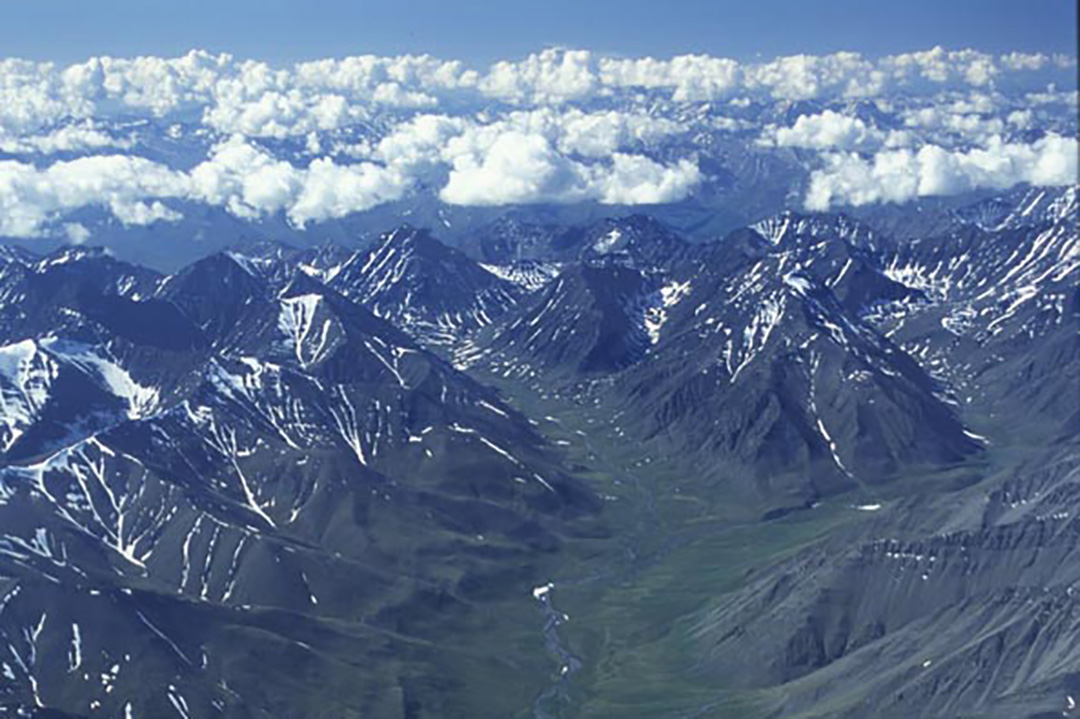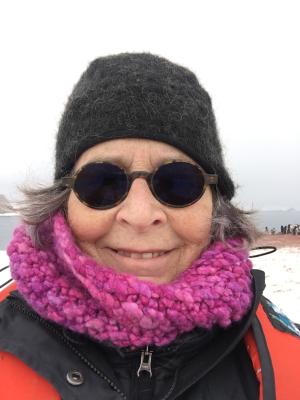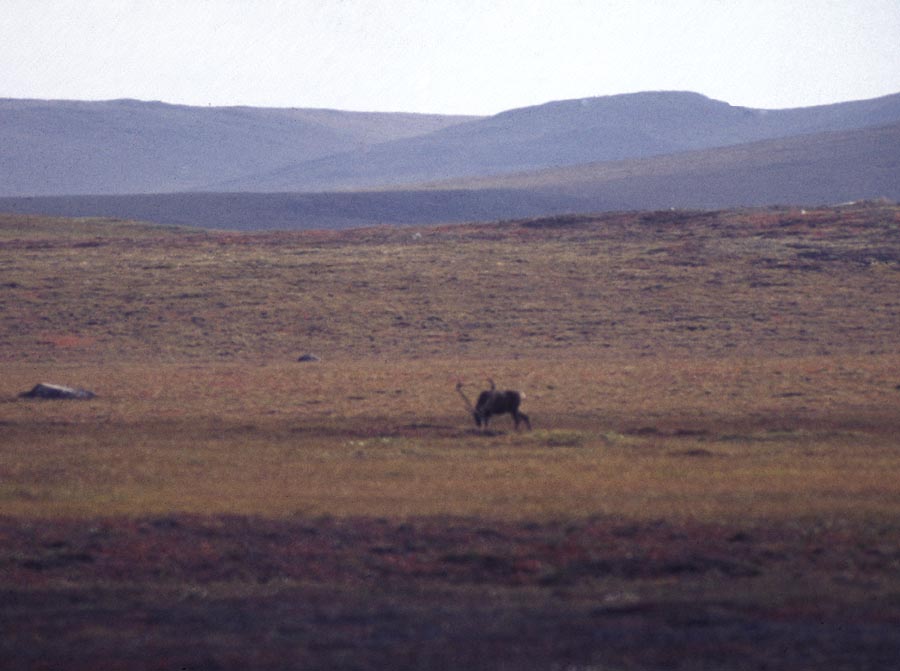Georgeie Reynolds, B.A. ’73, M.A. ’76, first saw the North Slope of Alaska from the window of a DC-3 propeller plane. Far above the Arctic Circle, she looked down at a brown carpet of tundra stretching for miles toward snow-topped mountains. As the old plane descended, she saw a moose raise its antlers from a pond and race into a thicket of moss and shrubs.
“It’s like a different planet,” she recalled thinking. “I don’t want to die up here.”
It was 1977 and Reynolds had just left Washington, D.C., after earning her master’s in anthropology at George Washington University. Now she was embarking on her first professional archaeological mission—in one of the most remote regions of the United States.
Reynolds had joined a crew of veteran scientists to survey areas of the Slope, a wilderness the size of Minnesota where winter temperatures can plummet to -50 degrees. Growing up in Westchester County, N.Y., less than an hour train ride to New York City, she had never even pitched a tent before. Now she was spending a summer more than 300 miles north of Fairbanks, dodging bear encounters, trekking through rugged terrain and even enduring a bout of hypothermia.
“I thought I had made a huge mistake,” said Reynolds, who wrote about her first summer on the North Slope in “Tundra: A Memoir of Alaska.” “But looking back on it, Alaska was the best thing that ever happened to me.”
In her 2021 book, Reynolds, who also earned her B.A. in anthropology and Spanish at the Columbian College of Arts and Sciences (CCAS), described how that first trip grew into a lifelong passion for the Arctic. Inspired by the late Robert L. Humphrey, a CCAS anthropology professor and veteran of Alaskan expeditions, she forged a three-decade career with the federal government including the U.S. Army Corps of Engineers, returning to Alaska again and again and eventually moving to Anchorage in 1982. During her time in Alaska, she helped survey unmapped mountains, uncover artifacts dating back thousands of years and fight to preserve the region’s indigenous cultures.
Reynolds traces her fascination with Alaska to a 1964 issue of Life magazine. She was just 12 when she flipped through the photos of an earthquake in and around Anchorage. She remembered those images years later when, as a sophomore at GW, she took an Arctic anthropology course with Humphrey, who would become her mentor and thesis adviser. In his lectures, he described both the natural beauty and unpredictable dangers of the region.
“He stressed that up north the environment was fragile and life uncertain,” Reynolds recalled. “It was so far away and so very different from my own experiences. I was hooked.”
A year after graduating, Reynolds joined a U.S. Department of the Interior survey expedition in Alaska, tasked with protecting archaeologically significant areas from oil exploration. Squeezing essential supplies into an overstuffed Eddie Bauer backpack—a knife, boots, rain gear and an assortment of bandannas, sweaters and jeans—the inexperienced Reynolds felt out of place the instant her plane touched down. “I was the weakest link out there, and I knew it,” she laughed.
But her new colleagues quickly showed her the ropes. With a shotgun slung over her shoulder, Reynolds was soon hiking through tundra that transformed from a muddy brown to a rich green as the summer wore on. The team unearthed indigenous Alaskan artifacts like stone arrowheads and debris from tool manufacturing while regularly crossing paths with grizzly bears. With summer temperatures near 40 degrees, Reynolds developed hypothermia—which, she said, was less frightening than a wolverine that attacked their helicopter during a take-off.
In a later mission, a bear crept so close to her campsite that Reynolds could see the whites of its eyes. She learned to scare off grizzlies by huddling with colleagues and making loud noises like banging pots and pans—and, when all else failed, to roll up in a ball and hope for the best. “You can prepare yourself for the elements. But wildlife is unpredictable,” she said.
During her time in Alaska, she also saw warning signs of climate change—from natural ice cellars that stopped fully freezing to housing foundations sinking into the melting permafrost. “I learned how fragile the environment is,” she said.
Throughout her career, Reynolds has specialized in the Inupiat culture along the North Slope. During an excavation of an Utqiagvik village site in Barrow, Alaska, she found rare items like parts of an Inupiat harpoon, decorated caribou antler arrowpoints and 500-year-old lip plugs used to drag seals across the tundra.
In 2003, Reynolds created the U.S. Army Corps of Engineers’ Tribal Nations Program and developed its first training program for consulting with indigenous communities across the U.S. She became, as she put it, “the face of the corps to Indian tribes.” Even after her retirement in 2014, she continues her involvement, sitting on the board of the Society of American Indian Government Employees (SAIGE) and remaining a strong advocate of Tribal sovereignty.
In her memoir, Reynolds reflected on a career of Arctic exploration, crediting Humphrey as a lifelong inspiration and advising other young field researchers on survival skills—like packing duct tape for repairs on everything from hiking boots to helicopter blades. Mostly, she said, she learned the value of having a team with her in the wild and in her life.
“Archaeologists tend to be introverted, isolated people digging in our little pits. But in the Arctic, I had to rely on my colleagues like a family,” she said. “That made me a better archaeologist and a better person.”




